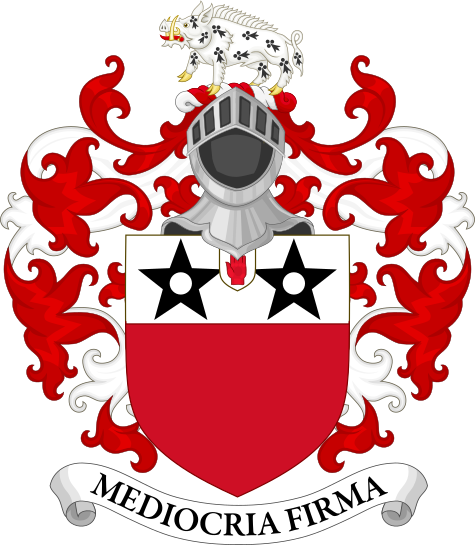|
Bacon Baronets Of Gillingham (1662)
The Bacon baronetcy, of Gillingham in the County of Norfolk, was created in the Baronetage of England on 7 February 1662 for Nicholas Bacon.He was the son of Nicholas Bacon, fourth son of the 1st Baronet of the 1611 creation, and brother of the 1st Baronet of the 1627 creation. His two sons, the 2nd and 3rd Baronets, both succeeded in the title. They both died young and the title became extinct on the latter's death in 1685. Bacon baronets, of Gillingham (1662) * Sir Nicholas Bacon, 1st Baronet (1623–1666) * Sir Edmund Bacon, 2nd Baronet (c. 1660–1683) *Sir Richard Bacon, 3rd Baronet ''Sir'' is a formal honorific address in English for men, derived from Sire in the High Middle Ages. Both are derived from the old French "" (Lord), brought to England by the French-speaking Normans, and which now exist in French only as part o ... (c. 1663–1685) Notes {{s-end Extinct baronetcies in the Baronetage of England ... [...More Info...] [...Related Items...] OR: [Wikipedia] [Google] [Baidu] |
Gillingham, Norfolk
Gillingham ( ) is a small village and civil parish in the English county of Norfolk. Gillingham is located north-west of Beccles and south-east of Norwich, along the A146. History Gillingham's name is of Anglo-Saxon origin and derives from the Old English for the homestead or village of Gylla's people. In the Domesday Book, Gillingham is listed as a settlement of 34 households in the hundred of Clavering. In 1086, the village formed part of the East Anglian estates of King William I. The parish contains two villages that were abandoned in the Fourteenth Century due to the ravages of the Black Death: Winston and Wyndale. Gillingham Hall is located within the parish and was built in the early-Sixteenth Century as a residence for Sir Nicholas Bacon. Today, the hall is owned by Edward Haughey. On the night of the 6th and 7 November 1943, a Dornier 17 light bomber crashed in the village after being shot down by anti-aircraft fire whilst on a bombing raid of Norwich. Only ... [...More Info...] [...Related Items...] OR: [Wikipedia] [Google] [Baidu] |
County Of Norfolk
Norfolk ( ) is a ceremonial county in England, located in East Anglia and officially part of the East of England region. It borders Lincolnshire and The Wash to the north-west, the North Sea to the north and east, Cambridgeshire to the west, and Suffolk to the south. The largest settlement is the city of Norwich. The county has an area of and a population of 859,400. It is largely rural with few large towns: after Norwich (147,895), the largest settlements are King's Lynn (42,800) in the north-west, Great Yarmouth (38,693) in the east, and Thetford (24,340) in the south. For local government purposes Norfolk is a non-metropolitan county with seven districts. The centre of Norfolk is gently undulating lowland. To the east are the Broads, a network of rivers and lakes which extend into Suffolk and which are protected by the Broads Authority, which give them a similar status to a national park. To the west the county contains part of the Fens, an extremely flat former marsh, and ... [...More Info...] [...Related Items...] OR: [Wikipedia] [Google] [Baidu] |
Baronetage Of England
Baronets are hereditary titles awarded by the Crown. The current baronetage of the United Kingdom has replaced the earlier, existing baronetages of England, Nova Scotia, Ireland and Great Britain. To be recognised as a baronet, it is necessary to prove a claim of succession. When this has been done, the name is entered on the Official Roll of the Baronetage. Persons who have not proven their claims may not be officially styled as baronets. This was ordained by Royal warrant (document), Royal Warrant in February 1910. A baronetcy is considered vacant if the previous holder has died within the previous five years and if no one has proven their succession, and is considered dormant if no one has proven their succession in more than five years after the death of the previous incumbent. All extant baronetcies, including vacant baronetcies, are listed below in order of precedence (i.e. date). All other baronetcies, including those which are extinct, dormant or forfeit, are on a separ ... [...More Info...] [...Related Items...] OR: [Wikipedia] [Google] [Baidu] |
Bacon Baronets Of Redgrave (1611)
The Bacon baronetcy, of Redgrave, Suffolk, Redgrave in the Suffolk, County of Suffolk, is the premier baronetcy in the Baronetage of England, which was created on 22 May 1611 for Sir Nicholas Bacon, 1st Baronet, of Redgrave, Nicholas Bacon, Member of Parliament for Beverley (UK Parliament constituency), Beverley and Suffolk (UK Parliament constituency), Suffolk, and the eldest son of Nicholas Bacon (Lord Keeper), Sir Nicholas Bacon, a prominent Elizabethan politician. The philosopher and statesman Francis Bacon was his half-brother. Bacon was the first person to be created a baronet. As the baronetcy is the oldest extant Baronetage of England, English baronetcy, the holder is considered the Premier Baronet of England. Bacon's second son Butts Bacon was created a baronet, Bacon baronets of Mildenhall (1627), of Mildenhall, in his own right in 1627 . Bacon was succeeded by his eldest son, Edmund, the 2nd Baronet. He represented Eye (UK Parliament constituency), Eye and Norfolk (UK Pa ... [...More Info...] [...Related Items...] OR: [Wikipedia] [Google] [Baidu] |

